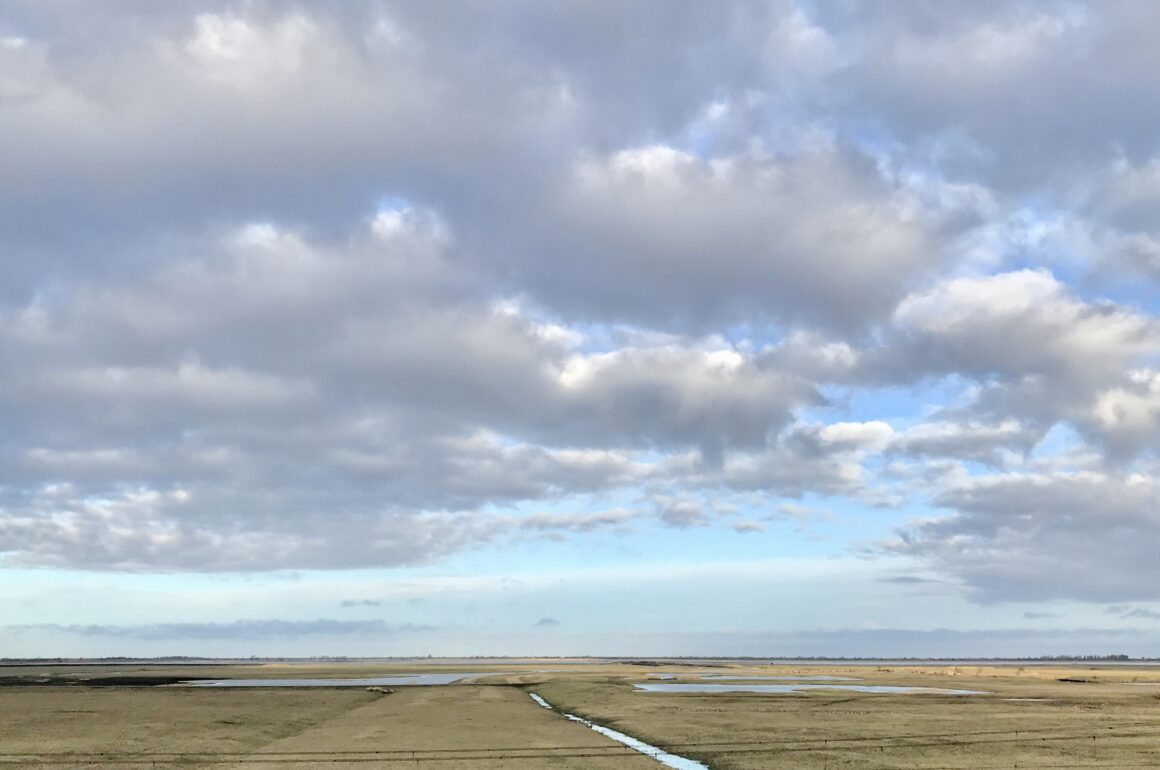
We know Georges-Louis Leclerc, comte de Buffon as just Buffon – arguably the greatest natural historian of the 18th century. He is the Frenchman most likely to upset our American friends evidenced by the enormous number of webpages dedicated to his remarks.
What remarks? Well, in his magnum opus, “Histoire naturelle, générale et particulière” Monsieur Buffon stated – without any evidence – that American nature and people were degenerate. “…que des sujets modelés en petit, des formes imparfaites qui paraissent avoir été négligées ou manquées. Les animaux sont presque tous sans défense, sans corne et sans queue. Leur figure est bizarre, leur corps et leurs membres mal proportionnés…”. Not without reason, this was taken as an insult by the third president of the United States, Thomas Jefferson. Since Twitter hadn’t been released yet, mainly for lack of phones, Thomas had a lot of time and he proceeded by scientifically and statistically refuting Buffon’s statements in his own book “Notes on the State of Virginia”. He even got a large Moose fed-exed to Paris to prove the point. Faced with real evidence, Buffon graciously accepted he had been wrong.
However – and I am not saying this out of misplaced national pride – there is one bird in the Netherlands that proves Jefferson wrong and Buffon right: the White-tailed Eagle (or Sea Eagle). It’s the only Dutch eagle. Significantly bigger and more impressive than its American counterpart the Bald Eagle, this eagle is nothing but spectacular. Our eagle makes Baldy look imparfait, even a bit manqué. So yes, I needed to see this beast, this flying door, this scourge of all things’ geese, this modern Roc.
The omens were bad. Landing at one of Europe’s largest airports, driving into Amsterdam South to pick up a new tripod and then proceeding to drive along 6-lane motorways due east – all I saw was concrete, asphalt and more concrete. And it was cloudy, drizzly and cold. However, once the bridge over the Gooimeer had been crossed and the first Great Cormorants started flying across the road things started to look more like the nature excursion I had been planning. A big sign announcing the new land (Nieuw Land) with the picture of a White-tailed Eagle lifted the spirits. At least the provincial marketing gods were on my side! My hotel was right on the A6 motorway and despite the strange location it is undoubtedly the best hotel for the Oostvaardersplassen. Yes, that’s where I was going – the Oostvaardersplassen – and the hotel has a little bridge straight into the National Park. The rooms are floating in a pond and the pond provides a home for a Eurasian Beaver family. Skeins of Greylag Geese completed the picture. Just across the bridge, some kind climate change people had invested a lot of money in a climate forest which to me looked like beaver food. The beavers agreed.
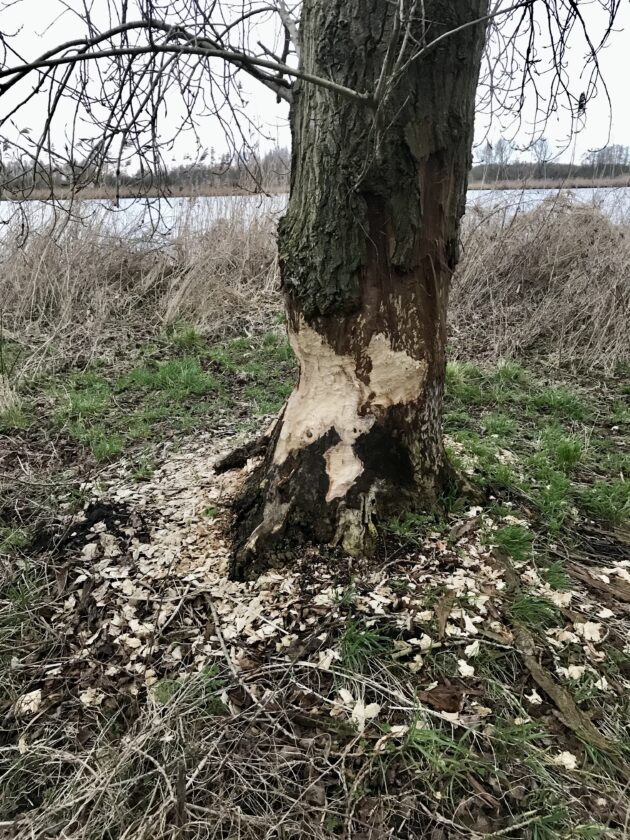
I will not bore you with the history of the new land, but it is an interesting feat of engineering and persistence. The Oostvaardersplassen were supposed to be industrial land but by the time the engineers showed up with their shovels the place had transformed into the best wetland in northern Europe. It is wild and very beautiful.
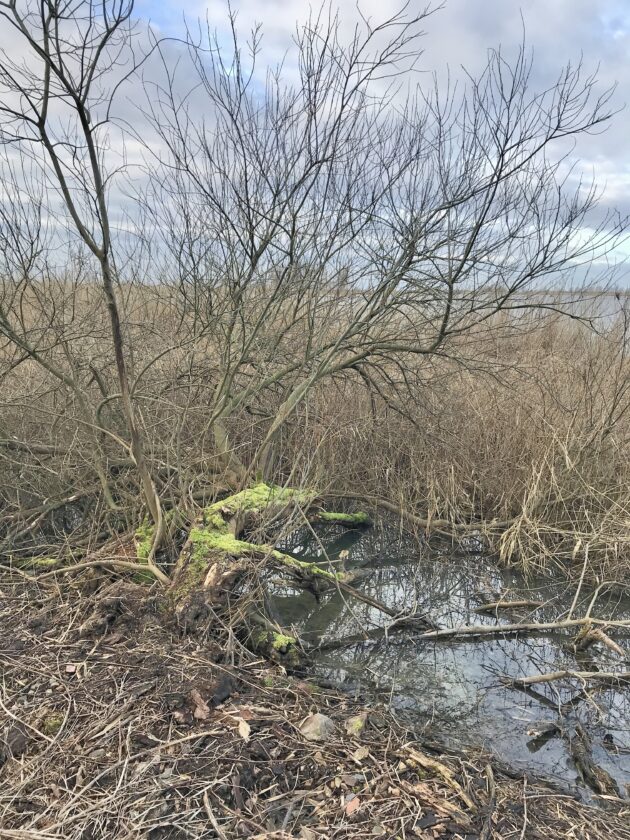
However, the engineers had to do their engineering so ever since the 70’s the water levels have been controlled up or down and large grazing animals have been released. The grazers are glorified farm animals, but they have been labelled by some very irresponsible people as “wild”. The animals themselves identified as “civilised” and started a hunger strike in protest. Actually, no, they just starved to death for lack of care. It was awful. Nowadays, the numbers are being controlled through culling. They still die, but in a nicer way.
After a restless night – caused by anticipation and an after-11 double espresso – I drove out to the Praambult. It’s only a 3-km walk from the hotel but a 20 km detour by car, but it was cold, there were not a lot of songbirds yet and I am weak like Buffon’s imagined Americans. Definitely, lack of songbirds. While driving along the Trekvaart canal I spotted hundreds of Tufted Duck with a nice sprinkling of Smew, Common Pochard and Common Goldeneye. At the Praambult look-out point it’s always clear you are in the Netherlands. So it was this day.
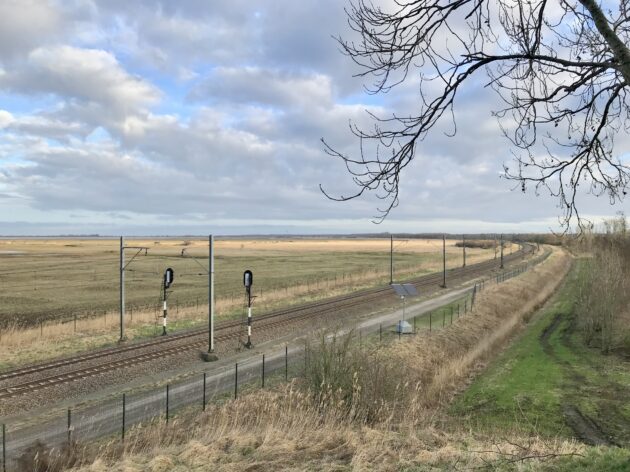
Beyond the railway thousands of geese were feeding, mainly Greylag Goose and Barnacle Goose. There were also Tundra Bean Goose, a variety of ducks, a pair of Slavonian Grebe, Mute Swan and passerines like Eurasian Siskin, Fieldfare and European Goldfinch. A few Common Buzzards got the adrenaline flowing and then, on a low dike: a massive juvenile White-tailed Eagle. Later, there were three adults flying around – more “doors” in the air than in the average farce in a theatre near you… This was a lifer for me but reducing this magnificent beast to a mere tick on a list – it never felt so wrong.
It can’t get any better than that but instead of returning to the hotel I decided to try out the area around the visitor centre. Disappointingly, a very interesting area was closed off for the cows to rest (what about a nice stable?) but walking to the Schollevaar hide I saw Common Chaffinch, Eurasian Tree Sparrow, European Stonechat, Eurasian Blackbird, Eurasian Blue Tit, Common Kestrel and even a Great Spotted Woodpecker. The reeds and brush were alive with Cetti’s Warbler and squealing Water Rail. At the hide itself, overlooking a largish lake there was a pair of Whooper Swan, and a similar array of waterfowl I had seen earlier that morning in the canal. At the visitor centre I had a spot of lunch and a good view of yet another White-tailed Eagle.
Buffon 5 – Jefferson 0.
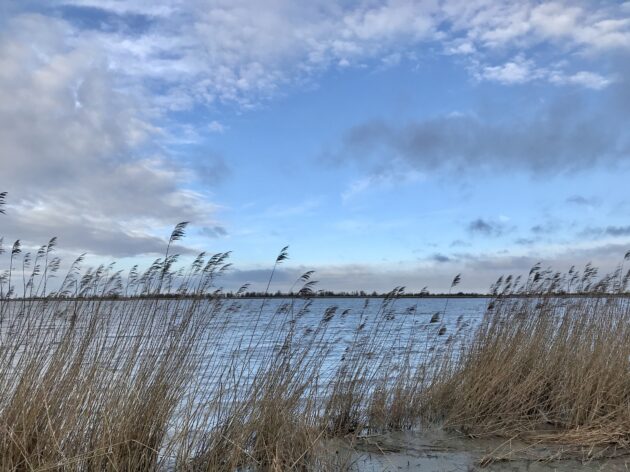



 New writers welcome – please contact us for details.
New writers welcome – please contact us for details.

















Great post, Peter! I wish I had written it – it has all the snarkiness and vague anti-Americanism that typically annoys the readers of my posts. And I assume you did not even make up Mr. Buffon.
I just saw the White-tailed Eagle as well – but on Hokkaido, where it is dwarfed by Steller’s Sea Eagle – of course, there will be a post on that eventually.
The Netherlands in your photo looks like I remember them from taking the train from Duesseldorf to Amsterdam – the railway dam by far the highest elevation anywhere, and the whole country looking like it might be flooded completely by only a little rainfall.
But I think you made one spelling mistake – shouldn’t the location be Oostvaardeerplaassen? If just for consistency reasons?
Hahaha,Kai, wrong on so many accounts. Too many vowels for starters. I’m only saying our eagle is better. OK, and the presidents were smarter back in the day.
Steller’s is bigger but also less elegant and a bit of a bully. Reminds me a bit of the leadership in that other country they occur in. Now that’s a political statement!
Not to brag or anything, but if you really want the full White-tailed Eagle experience, you need to visit the North-East of Germany: the Baltic Sea coast between Rostock and the Polish-German border. They are everywhere, especially from Rügen eastwards!
And if you go there in winter, and are lucky that it is a harsh winter with most of the bays nearly completely frozen over, forcing large numbers of waterfowl to concentrate in small areas of open water, you might even see 50+ eagles in one scan of your scope. So yeah, not bragging, just stating facts. 😉
Reading a location name always reminds me of the old The Onion article on an area suffering from the opposite problem:
https://www.ling.upenn.edu/~beatrice/humor/clinton-deploys-vowels.html
Maybe a potential for cooperation/letter exchange?